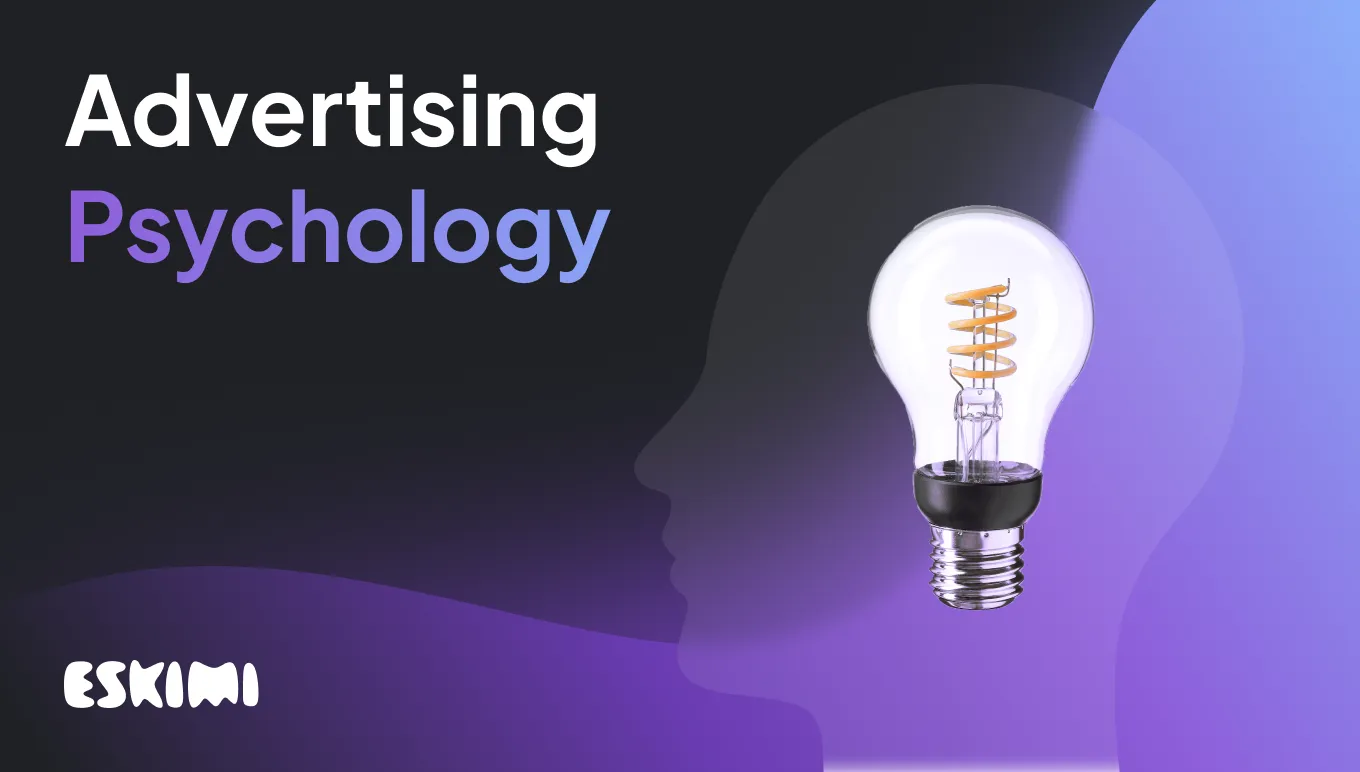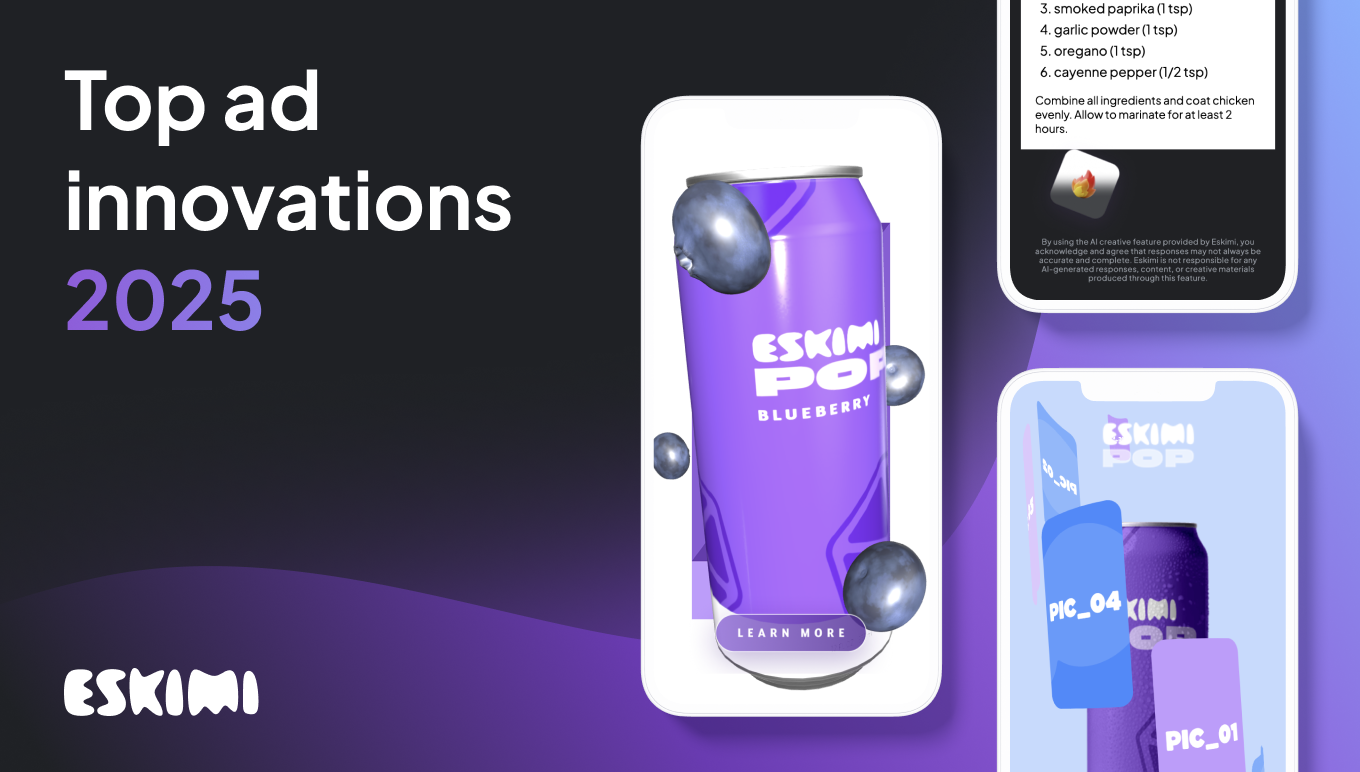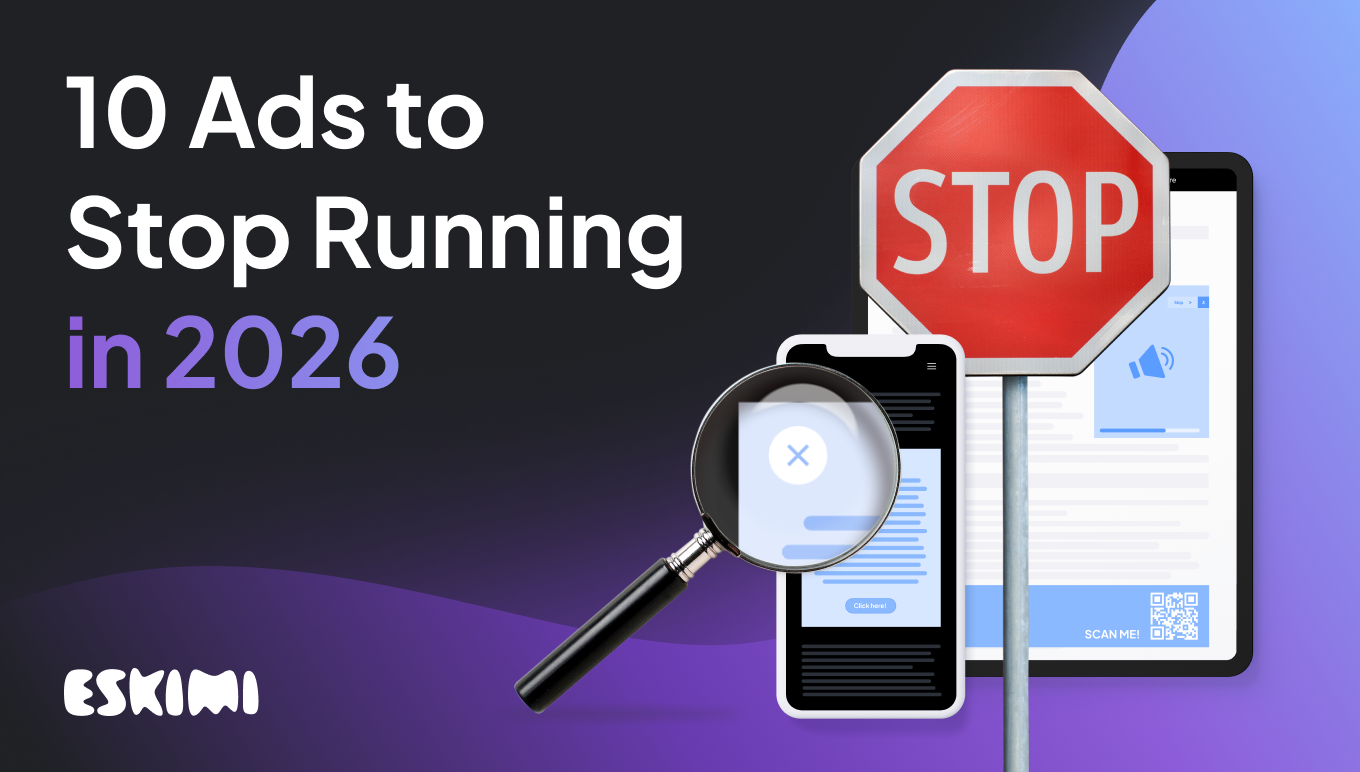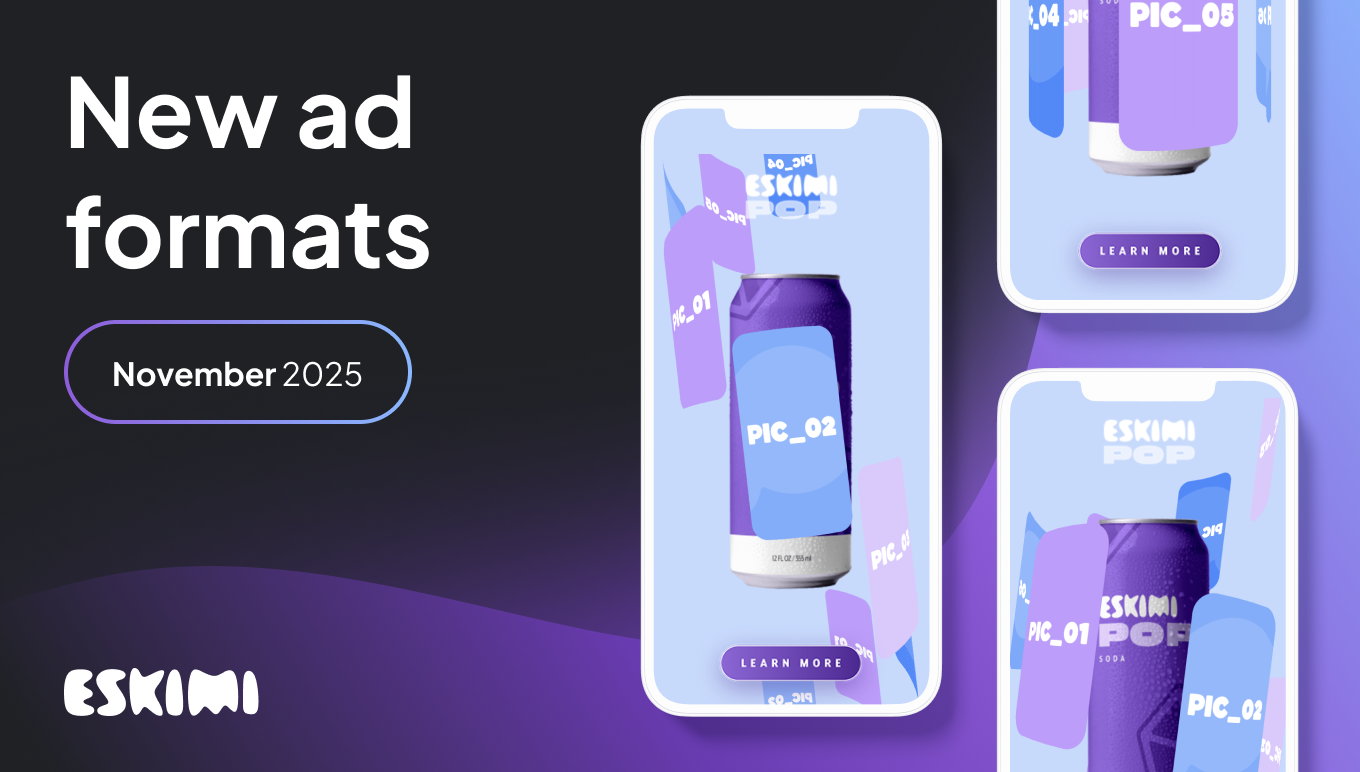Advertising Psychology: How To Create Persuasive Ads

Understanding the psychology of advertising can help marketers connect with their audience on a meaningful level. At its core, advertising psychology sheds light on the why behind consumer decisions, empowering brands to craft messages that resonate deeply and drive action.
Today, we’ll peel back the layers of consumer behaviour and unlock the secrets to creating compelling, persuasive advertising strategies that capture attention and foster lasting engagement.
What is the Psychology of Advertising?
The psychology of advertising investigates how and why ads influence human behaviour and decision-making. This intricate balance of persuasion and perception hinges on understanding the human mind—a complex and fascinating task.
1. Emotional Resonance: The most potent ads don't just sell a product; they evoke emotions. From joy to nostalgia, the emotional pull creates a subconscious link between the product and the desired feeling, making it more memorable and desirable.
2. Reciprocity: This principle plays on the human tendency to want to give something back when something is received. Whether it's free samples or valuable information, this technique can foster loyalty and increase the likelihood of conversion.
3. Social Proof: Humans are inherently social creatures, influenced by the actions and approvals of others. Showcasing reviews, endorsements, and social shares can significantly boost the credibility and attractiveness of your product or service.
4. Scarcity: Limited-time offers and exclusive deals create a sense of urgency. You can dramatically increase the action rate by highlighting what people stand to lose rather than gain.
5. Cognitive Fluency: Simplicity wins. Ads that are easy to understand and process are more likely to be effective. This principle extends to visual elements, message clarity, and the overall user experience.
Incorporating these principles into your advertising strategy doesn't just amplify your message—it ensures it resonates on a profoundly human level. Remember, the goal is to capture attention and foster a connection that transcends the transactional.
Historical Evolution

Psychological Advertising Theories
Let’s go behind the curtain and address three pivotal theories that help marketers influence and understand consumer decisions.
Elaboration Likelihood Model (ELM)
Central vs. Peripheral Route: ELM posits two routes to persuasion—central (focus on logical arguments) and peripheral (influenced by the attractiveness or credibility of the source). For advertisers, this means tailoring messages to the audience's level of involvement.
Application: Use data-driven arguments for high-involvement products (e.g., cars, electronics) and celebrity endorsements for low-involvement items (e.g., beauty products).
Maslow's Hierarchy of Needs
Maslow's pyramid—from basic physiological needs to self-actualization—guides advertisers in aligning products with consumer desires at various levels.
.avif)
Application: Highlight safety features for family cars (safety needs) or portray luxury watches as status symbols (esteem needs).
Theory of Cognitive Dissonance
This theory explains the discomfort of holding conflicting beliefs, leading to altering attitudes or behaviour to reduce dissonance.
Application: After purchase, reinforce the decision's wisdom through ads emphasizing the product's unique benefits, reducing buyer's remorse.
Core Principles of Advertising Psychology
Reciprocity
Reciprocity is a psychological phenomenon where individuals feel compelled to return a favour when something valuable is received. This principle is potent in advertising, transforming passive viewers into engaged customers.
Applying Reciprocity in Advertising
Give first, gain later: Offer your customers something of genuine value before asking for their business. This could be a free sample, a valuable piece of content, or an exclusive discount. The key is to make the first move in giving, setting the stage for a reciprocal action from the customer.
Quality over quantity: The value of what you give doesn't necessarily correlate with its cost. It's the perceived value from the customer's perspective that triggers reciprocity. Educational content, for example, can immensely impact if it solves a specific problem or enriches the customer's knowledge.
Personalize your offerings: Tailor your gifts to the interests and needs of your audience. Personalization amplifies the perceived value of your offering, making the reciprocal response more likely.
Leverage social proof: Showcase how others have benefited from what you've given. Testimonials, case studies, and user reviews can significantly enhance the appeal of your offer, encouraging others to engage in the reciprocity cycle.
Timing is everything: The impact of your gesture is magnified when it's unexpected. Surprise your audience with your generosity when they least expect it to leave a lasting impression.
Keep it ethical: The aim is to build genuine relationships with your customers, not to manipulate them. Ensure that your approach to reciprocity is sincere and aimed at providing true value to your audience.
The Power of Social Proof
Social proof operates on the principle that people are influenced by the actions and endorsements of others, especially in situations where they are uncertain.
Testimonials
Authenticity speaks volumes: Genuine testimonials from satisfied customers provide a relatable narrative for potential buyers. These real-life success stories build trust and credibility, showcasing the tangible benefits of your product or service.
Strategic placement matters: Position testimonials where they'll have the most impact, such as on landing pages, product pages, or at the checkout. This can dramatically reduce purchase hesitation and increase conversion rates.
Reviews
Quantity and quality count: A high volume of positive reviews can significantly influence purchase decisions. However, the quality of these reviews is equally important. Detailed reviews that address specific features or outcomes can sway potential buyers by providing the assurance they need to decide.
Leverage negative reviews: Surprisingly, a few negative reviews lend authenticity to your product and provide an opportunity for public customer service excellence. Responding thoughtfully to criticisms shows you value feedback and are committed to continuous improvement.
Influencer Endorsements
Choose the right person: The right influencer for your brand shares your target audience and embodies your brand values. Their endorsement is a decisive vote of confidence, tapping into their followers' trust and admiration.
Transparency is key: Ensure influencer partnerships are transparent to maintain trust. Authentic endorsements resonate more deeply with audiences, while undisclosed or forced endorsements can backfire, damaging credibility.
Scarcity and Urgency
Scarcity and urgency are two principles that stand paramount in motivating consumers to act quickly. By leveraging these concepts, advertisers can significantly increase the perceived value of an offer, compelling consumers to make prompt decisions.
The Psychology of Scarcity
Perceived value increase: Scarcity capitalizes on the human tendency to place higher value on items that are less available. A 'limited edition' product feels more exclusive and, therefore, more desirable.
Fear of Missing Out (FOMO): When consumers believe an offer is scarce, they experience a heightened fear of missing out on a good deal, which can push them towards making a purchase decision more quickly.
Applying the principle: Limit the quantity of your product or offer a special edition that is available only for a short period. Highlight this exclusivity in your marketing materials to evoke a sense of scarcity.
The Power of Urgency
Time-sensitive decisions: Urgency encourages consumers to act swiftly. By imposing a time limit on an offer, you introduce a psychological trigger that accelerates decision-making.
Immediate gratification: In today’s fast-paced world, consumers seek immediate satisfaction. Urgent offers tap into this desire, promising instant gratification if the consumer acts fast.
Applying the principle: Create time-bound offers and communicate the deadline clearly in your ads. Use countdown timers on your website and emails to represent the ticking clock, visually enhancing the urgency.
Example
Imagine you're marketing a new skincare product with a unique ingredient available only for a limited period. Your campaign might include:
- An email subject line stating, "Exclusive Launch: Only 100 Bottles Available of Our Revolutionary Skincare Formula."
- A landing page with a countdown timer indicating when the offer ends and a real-time counter showing how many products are left.
- Social media posts highlight customer testimonials and emphasize the "once-in-a-lifetime" opportunity.
Understanding the Consumer's Mind: The Decision-Making Process
When consumers face a choice, they don't just flip a coin. They embark on a psychological journey, often subconsciously, through distinct stages. Recognizing these stages allows advertisers to craft messages that resonate deeply and drive action. Here's how it breaks down:

Cognitive Biases in Advertising
Cognitive biases shape consumer behaviour and decision-making processes. Let's explore how advertisers exploit common cognitive biases to enhance the effectiveness of their campaigns:
Anchoring effect
This bias refers to the human tendency to rely too heavily on the first piece of information offered (the "anchor") when making decisions. Advertisers use this by presenting a high price first, making the actual selling price more appealing.
Example: Introducing a premium product at a high price before showcasing the main product at a lower price, making the latter seem like a bargain.
Confirmation bias
People favour information that confirms their preconceptions or hypotheses, regardless of whether the information is true. Advertisers capitalize on this by aligning their messages with the audience's existing beliefs and preferences.
Example: Using testimonials and reviews that echo the target audience's positive opinions about a product, reinforcing their belief in its value.
Psychological Tactics for Effective Advertising
Using Colour Psychology to Influence Consumer Behavior
Colour psychology is a potent tool in the arsenal of advertising psychology, wielding the power to evoke emotions, influence perceptions, and ultimately drive consumer behaviour. Below, we delve into how specific colours can shape mood and perception, offering actionable examples.

The Impact of Storytelling
Storytelling is a powerful psychological tactic that brands use to weave their messages into the fabric of our lives. Here’s how narrative-driven ads forge a stronger emotional bond with their audience:
Emotional resonance
Stories evoke a spectrum of emotions, from joy to sadness, trust to anticipation. This emotional engagement is crucial for memory formation, making the brand more memorable.
For example, a commercial showing a person’s journey overcoming challenges with the help of a product/service can inspire and resonate on a personal level.
Relatability & empathy
Good stories make the audience see a part of themselves in them. When viewers can relate to the characters, settings, or situations, it fosters empathy, making the ad's message more persuasive.
For example, ads that depict real-life scenarios or common dreams tap into shared experiences, making the brand feel more relatable and trustworthy.
Curiosity
Stories that start with a compelling question or mystery hook the audience, keeping them engaged till the end. This suspense builds a connection as the audience waits for the resolution.
For example, an ad that begins with a mysterious challenge and unfolds how the product is the key to overcoming it keeps viewers engaged.
Sense of belonging
Sharing stories creates a sense of community and belonging. Ads that narrate stories reflecting group identities or values can strengthen the bond between the brand and its audience.
For example, brand narratives championing common causes or values can create a loyal community around the brand.
Psychology of Advertising Examples
We have gone through the theory. Now, let’s explore the application. Here are some advertising examples that exemplify the use of psychology.
1. Amazon Prime Day
Amazon capitalizes on this with Prime Day, creating a sense of urgency with limited-time offers. This triggers a fear of missing out (FOMO) among consumers, driving them to purchase more within the short time frame.

2. Spotify Wrapped
Spotify’s Wrapped campaign leverages social proof by encouraging users to share their personalized year-end music summaries on social media. Seeing friends share their Wrapped lists motivates others to engage with Spotify, reinforcing brand loyalty and attracting new users.

3. Nike "Just Do It" Campaigns
Nike’s "Just Do It" campaigns often feature inspiring stories of perseverance and achievement, resonating deeply with consumers’ aspirations and challenges. This emotional connection fosters a strong brand relationship and motivates consumer action.

4. Apple's "Shot on iPhone"
Apple’s "Shot on iPhone" campaign showcases professional-quality photos and videos taken by iPhone users, positioning the iPhone as the leading smartphone camera. This demonstrates the product’s capabilities and leverages user-generated content to establish authority in the smartphone market.

Want to Improve Your Advertising Efforts?
Are you ready to transform your advertising strategies with the power of psychology? Dive deeper into the nuances of consumer behaviour, and start applying these principles to your campaigns today.
Whether crafting your next ad or refining your overall marketing strategy, remember that the most successful brands connect, resonate, and engage with their audience on a psychological level. Book a demo, and let’s explore together.
Level Up Your Advertising with Eskimi
- Reach 96% of Open Web
- 2,500+ Targeting Options
- 100% Managed or Self-Service
- In-House Creative Studio Team
- Display, Video, In-Game & CTV
- #1 Rated DSP on G2





